
Combining visuals and a multisensory experience are an important part of advertising and marketing in our hyper connected world, so it is not surprising that so many companies have jumped on the augmented reality bandwagon, offering tools that visualize their products in a brilliant and memorable way. While some may say that A/R was simply a fad last year, 2011 will show that the fad is a “reality” for the long term. With web cams integrated into every Internet connected device, A/R is more and more compelling for marketers. From cereal boxes to packaging tools to advertising enhancements A/R is showing up everywhere. B2B, B2C, and B2G marketers are all using the technology. Below are some compelling uses of the technology.
B2C Example – Topps Baseball Cards
Collectors who hold a special Topps 3D Live baseball card in front of a webcam will see a three-dimensional avatar of the player on the computer screen. Rotate the card and the figure rotates in full perspective.
B2B (or B2C Example) – United States Postal Service
The Virtual Box Simulator is a super clever use of the emerging technology that lets users compare the size of a desired shipable item they need sent to the size of boxes available from the postal service by seeing how well their item fits inside a box with transparency. Although not particularly high octane excitement, it does illustrate the practical use of A/R which is yet to be fully explored.
p
It’s exciting to see such a great technology for delivering great brand experiences for marketing and functional utility. In 2010 while working with Intel my company delivered an integrated campaign using Augmented Reality. Check it out below and the great complementary rap from our Arlington Rap friend GoRemy
;

Smart digital media strategies depend on deep, accurate and relevant personas. Getting personas accurate and relevant in terms of website user experience, search media, and social media are critical. Mistakes in this persona development process lead to flawed content strategies, search in bound link targeting, and unusable web experiences. Correcting these personas after strategy deployment leads to budget over runs and dissatisfied brand embracers. Smart digital consultants use processes to reduce the risks inherent in persona development and the deliverables that are driven out from these personas.
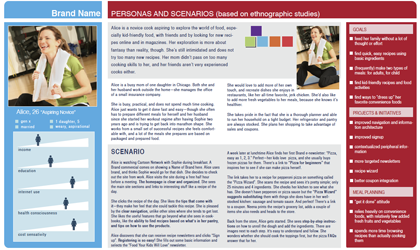
Typical persona deliverables should include:
- Portraits of each persona delivered as compelling summary graphics and slides.
- A behavioral model of each persona, comprised of how the persona thinks and reacts to site concepts.
Conventional persona development begins with qualitative research usually through focus groups and interviews, both virtually and in person. The process begins with analytical research, based on a large enough sample of your actual site visitors. Depending on the business and industry the word “large” obviously means different things. Leveraging clickstream data and the associated demographics, attitudes, and visit metrics, you can validate what your personas dictate. We therefore know definitively:
- Web property visitors
- Motivators for why they come
- The various persona attitudes they arrive
- The linear tasks they hope and seek to accomplish
- How successful these experiences are (review abandon pathways, shopping carts, applications, etc)
- How they feel about your digital presence and your brand
- How the site experience influences their likelihood of doing business with your brand in the future
Because we identify the primary personas from this statistically robust sample of thousands of actual visitors, the likelihood of our missing a key persona or even a key attribute is far lower than would be the case with exercises that start with focus groups.
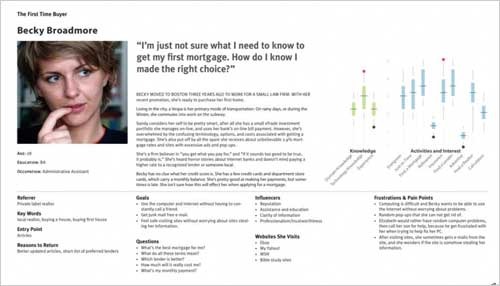
Only when we have a clear picture of current visitors do we move to focus groups and one-on-one interviews, where we dig into the needs and experiences that formed your visitors’ attitudes towards your space, your brand, your products or services, and your competitors. We know, for each persona, the underlying motivators that influence the way they see your site and what they need from it, both now and in the future.
Get in touch if you would like help building out your personas to inform a sound digital media strategy.

“Markets are conversations – talk is cheap, silence is fatal”
The quote above should be taken very seriously by every marketer. While niche consumer brands took this course over the last few years, 2011 is the year that all brands need to aggressively embrace this position in the marketing talent mix.
While it can be an outsourced position at first through agency augmentation (this is what I see often), over time agencies should function as client mentors and best practice trainers to help build a social media conversation capability in house.
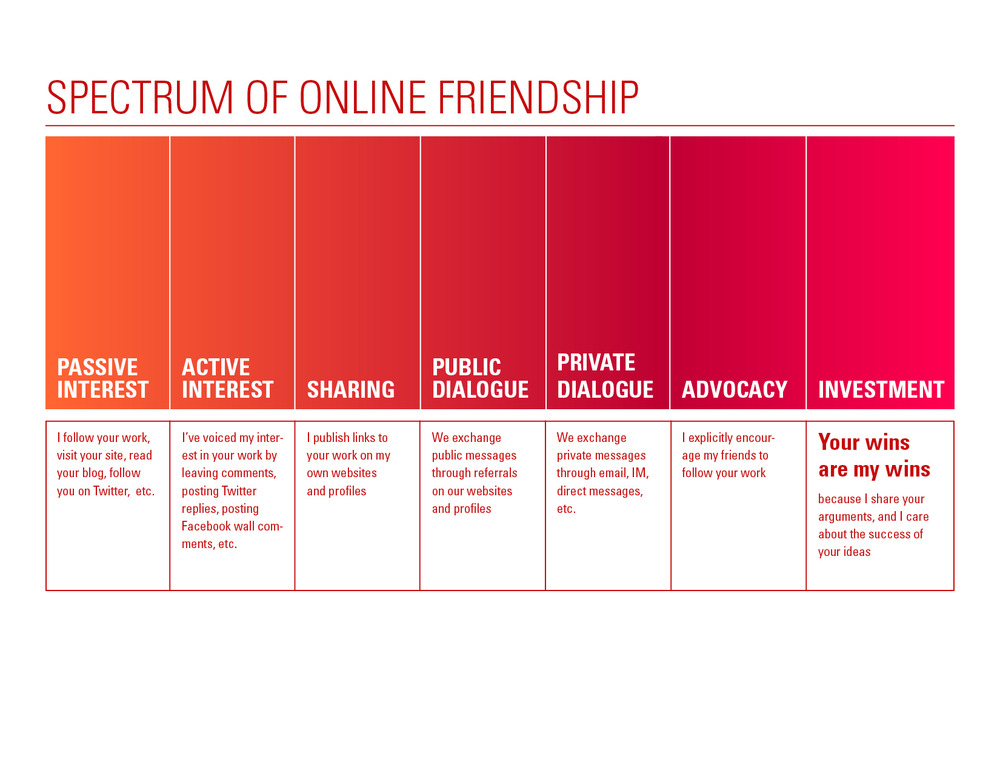
This position should be deployed to be a content curater, creating and engaging in conversations that are critical to shaping the overall brand sentiment. In a broad sense the position should include:
Content – This is your in house blogger, content advocate, white paper generator, and any other digital publishing superstar, developing everything from Podcasts to webinars. Most importantly this person must stay up to date on the latest and greatest social media properties to ensure your brand has an optimized presence on all social destinations your particular brand personas visit and interact with.
Context – Aggregating and filtering content and conversations from every digital and traditional channel is critical for delivering compellling content to your customers and prospects.
Connection – All brands play in a market ecosystem that includes partners, customers, competitors and analysts. Content development can have many mutual benefits that drive conversation and brand visibility. Your Chief Conversation Officer should be in charge of developing ways to create these partnership opportunities and empower the conversations you encourage to become a strong referral source for direct business, link generator for search optimization, and follower acquirer for your social media strategy.
Community – The conversations you drive must eventually come together as a community. The ultimate success is creating dialog between all consituents that you start, guide, facilitate, and shape. Being the conversation platform and curator will drive much higher brand recall, and enable you to achieve all the key performance indicators that your social media strategy outlined upfront.
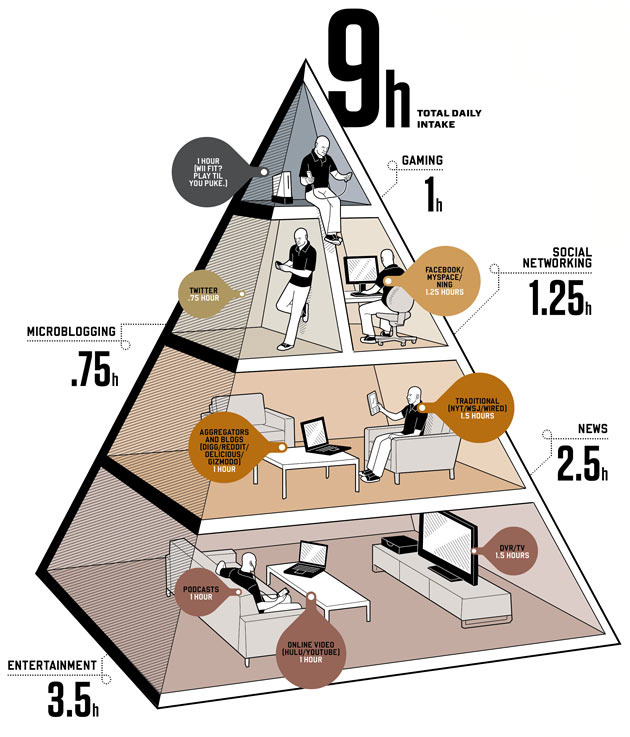
The primary tool for this new c-suite role is indeed social media, but don’t forget traditional forms of conversation as well. Twitter, LinkedIn, YouTube, Facebook, blogging and other forms of digital media must supplement phone calls, thought leadership, salon dinners and the most effective still – the handwritten letter – to produce the ultimate, full-bodied, authentic, value-based conversation.
Perhaps you can’t yet convince the powers that be that this role is needed in a full-time capacity. I would recommend you work with your agencies and consultants to create a staff augmentation approach, show value over time, build an ROI case, and before too long your CEO, CTO, CIO, CFO, and COO will have a new friend down the hall to “chat with.”
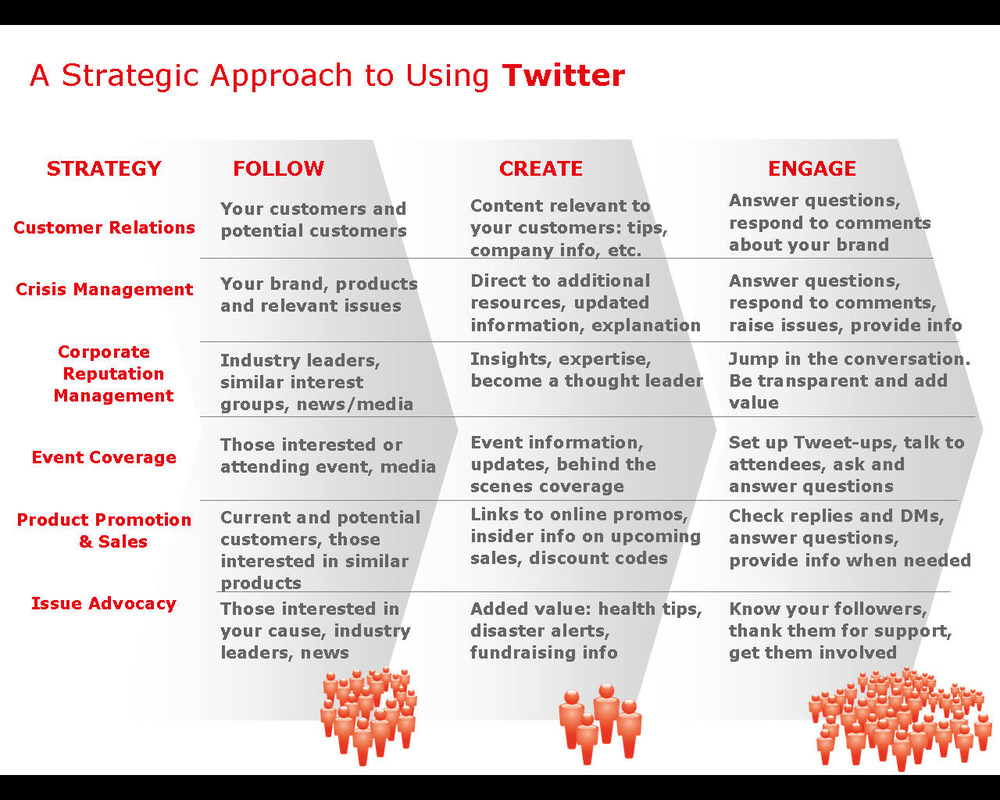

Quora’s rise is all the buzz as the digitally savvy crowd try out the latest social media phenomenon. I find it to be a great site for research and participation. We see thought leaders from Steve Case to Vint Cerf using the tool to get there messages out, answering questions that involve their brands, and enjoying the search optimization visibility benefits the emerging platform delivers to its aggressive user base.
First, what is Quora?
Quora is “a continually improving resource of questions and answers created, edited, and organized by everyone who uses it. The most important thing is to have each question page become the best possible resource for someone who wants to know about the question.” Like Wikipedia, Quora is a collaborative effort, where users are meant to document the world around them. Over time, the database of knowledge should grow until almost everything that everyone wants to know is available in the system. Over the last couple of weeks, Quora’s traffic has doubled, likely making it the “breakout site” of 2011.
After extensive research, I am confident in saying that B2B, B2C, and B2G companies should become Savvy with Quora as it is likely the social networking site will become increasingly more important as part of a holistic digital media strategy. Here are some ways that Quora could benefit B2B social media engagement and further business development:
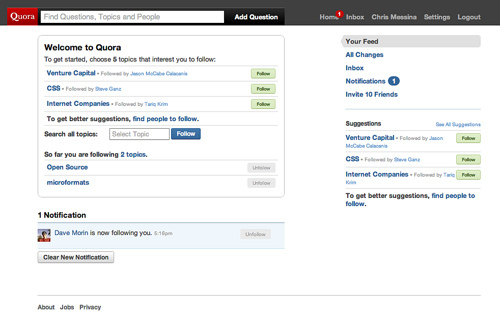
Establish thought-leadership within your specific industry
Asking and answering important and timely questions about your industry shows other industry leaders, prospects and clients that you keep yourself informed about market research and other key developments. The beauty of Quora is that it preserves its participants’ thought-leadership, as it banks questions and answers forever. Also, because attention to quality questions and answers is fundamental to the success of Quora, the Quora team ensures that you always sound professional by enforcing proper spelling, grammar, punctuation and style. People can also vote on your answers, which can elevate you to an “expert” status.
The user interface and user experience approach and how it integrates with social media is some of the genius that they deliver. Smart integration with Facebook. Sound policing systems to avoid a spam filled environment, and other smart techniques are driving great quality consistently across all topics for all industries.
Connect and build relationships with industry experts, prospects and existing clients
If you are going to use social media in your digital media strategy, you must be present everywhere people could reasonably expect you to be. I mentioned previously that Quora is on the rise. There are already thousands of individuals to connect with from multiple industries participating on the site. Like any social networking site, engagement with fellow industry experts, prospects and clients offers many rewards, including brand awareness, loyalty, promotion and business opportunities. Demonstrating thought leadership on Quora can also help you expand and develop your community based on the exchange of helpful and insightful professional information, which consequently encourages others to turn to you for professional assistance.
Also, while individuals interested in your business may not expect to find you on Quora immediately, as they may Twitter, Facebook or LinkedIn, it is still important for you to keep it on your radar. I am hopeful that applications like Posterous and other social shrapenal tools will integrate Quora so that content produced on Quora can be published elsewhere with ease. Keep in mind that early adopters of new media tools can get the first-mover advantage over those who join late. For example, if you are quick to answer questions related to your industry, you have a good chance of earning loyal followers, an opportunity that other businesses may miss. Also, if Quora becomes a sensation over the next few months, you will already have a firm enough grasp on the tool to be able to participate competently right away.
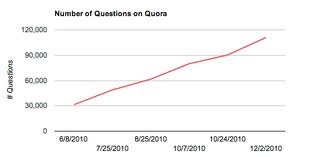
SEO
More often than not, people turn to Google to find answers to their questions. Quora has a solid SEO platform that ensures questions and answers from their site surface on search engines. By being a regular contributor to Quora, you have a better chance of surfacing in a search of questions related to your industry.
Get your urgent questions answered by experts
The purpose of Quora is to ask questions which require immediate answers. There are currently thousands of experts from multiple fields participating on Quora. Use their expertise to ask hard and specific questions. If you run into an issue, especially if it’s technology-related, chances are someone else has experienced the same thing at one point or another. Post it on Quora to receive fast answers and connect with others who share your experiences.
So, do you plan on leveraging Quora in your marketing strategy? Try it and let me know what you think. Its my pick for the hot web brand of 2011. Any questions?

Facebook analytical insights introduced last year give brand marketers, agencies and communicators the ability to understand how their fan pages are performing. This performance should be aligned with the key performance indicators set forth in your master digital media strategy. Facebook shifted metrics to focus more on content sharing and fan behavior rather than the raw popularity of a page in its latest analytical updates. In 2011 here are some focus areas for your Facebook campaigns.
Where are the ‘Likes’ coming from
Facebook provides analytics that show how fans arrive at pages, whether through search engines, social engagement, or organically through other visibility generated in an integrated campaign. Understanding how your fans find you instantly gives you insight into how to reach them or expand your community for future outreach efforts.
Fan Page Demographics and User Behaviors
Demographic information about your fans includes gender, age, location (country and city) and language preferred. All data is anonymous, but this basic demographic information can help brands tailor and adjust their content to appeal to their true audience, and eliminate guesswork. Third party platforms from companies like BuddyMedia enable global brand marketers to focus their resources for a multilingual social engagement strategy to provide experiences in the necessary languages per the data extracted from Facebook.
Tab Popularity
A great improvement from previous analytics, with the expansion of tab customization on pages has enabled the analytics to tell brand marketers which tabs are most popular and provided more granular data on tab usage. These analytics shape future content strategies and tactics throughout a brands entire digital media strategy.
Quality Matters and Facebook Has The Data To Prove It
Facebook now gives each post a rating or index to allow for comparison and easy measurement. This function allows you to truly understand what content really makes fans tick to shape your future content strategies.
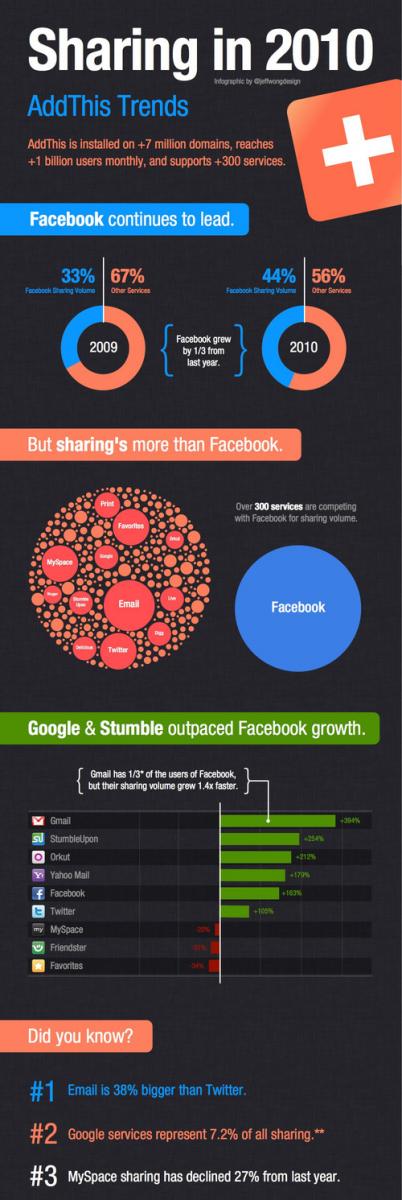
Are you gleaning insights robustly through Facebook? What are you finding out?

TAG YOUR IT! No this isn’t a phrase that 5 year olds are yelling on the playground, but rather marketers and communicators are saying to their targeted constituents. Mobile tagging is the industry term for the creation, rendering, and applying of a two-dimensional bar code that is a link to an online experience, accessed through a mobile device. Each 2-D code, or tag, is encoded with specific information such as a Web URL, a phone number, or a person’s contact information. Once a tag is scanned or photographed it creates the link to a specified webpage, dials a voice call, or downloads contact information. Mobile tags are commonly used to link the physical and digital worlds within the context of a very specific location.
Marketers considering tagging tactics quickly discover a large and muddled technology and service provider landscape. Which tagging technology makes sense for your campaign? Here is a key benefits breakdown of some of the most popular solutions.
For Awareness
Instant Lottery – Product Giveaways, Point of Purchase Contests, Ticket Giveaways, Reward Systems
Mobile Arcade – Team Based Interactions, Phone Game Controllers, Location Based Games (like SCVNGR), and Geograhical Explorations
Travel by Tag – Preview Your Destination, Get historical content from where you stand
For Information Gathering
Product Preview – Get the facts before you buy
Content Sampling
Behind The Scenes – Get behind the scenes information on your product
Scan Triggered Updates – Produce a digital memory or Digital snapshot
Sample content before purchase, deeper information prior to purchase, deliver richer experiences, real time schedules, understand where your product has been, ensure the product is real and not stolen, convert currency costs for products instantly
For Action / Purchase
Scan To Pay – Skip the line and pay faster
Unlockable Rewards – Scanabable coupons, points system for loyalty programs, digital character expensions
For Post Purchase
Feedback Loop – Facebook Likes, Loyalty Measurement, Product Review Shortcuts, Vote on Artists and Products
Mobile How-to – Product assembly instructions, food recips, video instructions, training


Trend #2 – User Experience Design Becomes More Humanized
As marketers strive for the strongest brand recall in their competitive marketplaces, they must still focus on what our data continues to show – leveraging as many human sensors in a branded experience as possible drives results. The more human sensors involved in a customer experience the higher the brand recall, resulting in stronger campaign key performance indicators and the most positive word of mouth brand marketing you can get – viral. The following trends in humanizing branded online user experiences will continue to emerge in 2011:
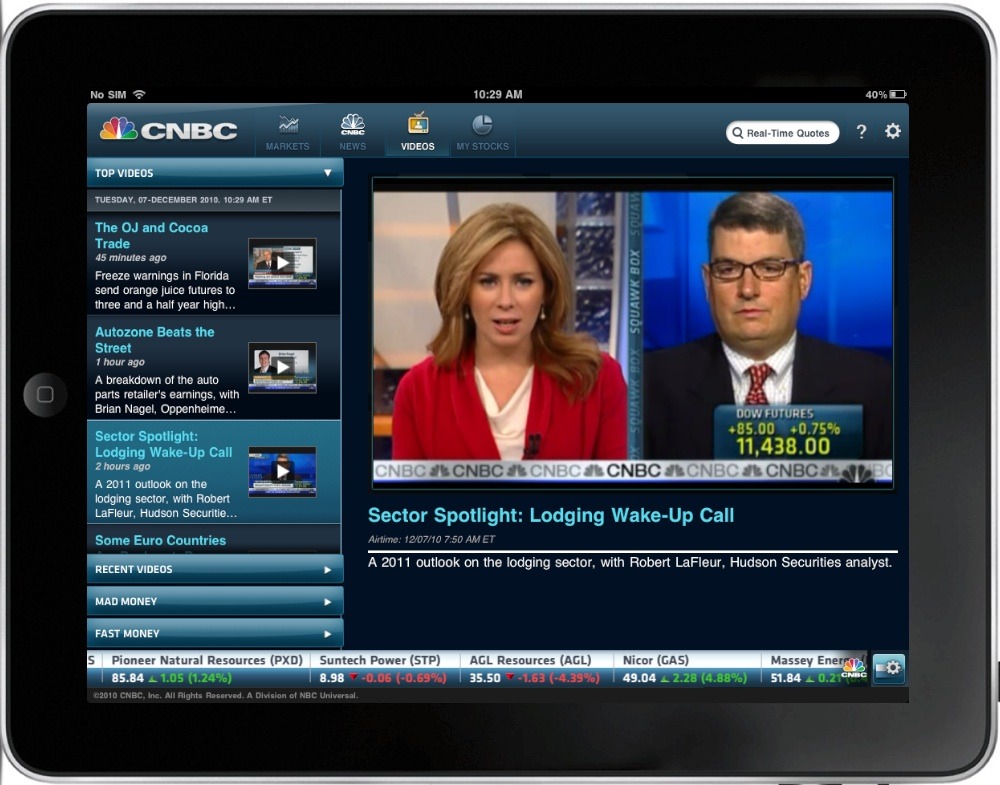
Touch – This year, brands will focus increasingly more on the touch experience. Touch allows the user to engage with another sense, thus offering higher brand recall. As tablets becomes ubiquitous, another experience will need to be considered in how we produce the interactive arts. Another dimension to the style sheet will emerge as standard in all projects to allow for presentations to be optimized if they have touch or a no-touch capability. Mice are much more precise than fingers, so interfaces will become dynamic to create optimized interfaces for the various devices. The human race is proving that there is a 4th screen needed in life. Wall mounted, the workbench, the casual experience and the mobile experience. I find myself equating my laptop to the modern day workbench, while the tablet is more like a casual device. iPhone and Android phones need to fit in the pocket. Until technology produces a mass market stretchable product, there will be two product categories. Printing and the disposable goods industry will shrink as people go all digital. The tablet is speeding that industry contraction. Printing in an analog way makes no sense with today’s technology. I am seeing consulting firms far and wide with high volumes of presentations switching to synchronized iPads in presentations versus printing. Clients prefer the progressive, cleaner, portable experience. Branding these experiences and producing applications for this customer behavior is a great opportunity to differentiate your brand.
CNBC iPad Application
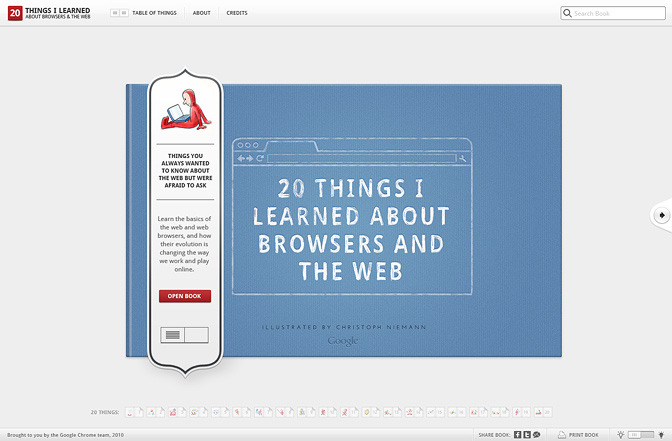
Social Media Integration – Understanding how your social ecosystem is engaging with brands is critical in today’s socially connected world. A sound social strategy that creatively weaves into a brand experience is where you will see all brands, including public sector, business to consumer, and business to business audiences. These platforms are communities in themslves. Brands like Facebook, YouTube, Twitter, LinkedIn, Vimeo will all be integrated into a user experience.
Live Customer Service – The time to react to your customer is shrinking. Customer service has become the new marketing. Look at how Rackspace and Zappos and other customer service centric brands are growing. These are very different industries, both branding themselves with Ritz Carlton quality customer experiences. The “social support” experience grows. Brand get rated online through outlets like Yelp, Service Magic, etc. These ratings are search optimization pillars and facilitate many more word of mouth conversations between companies and their brand ambassadors. Encouraging social support produces a strong knowledge base and a self service community that drives support costs down and brand engagement up.
HTML5 – The standard will continue to grow as browsers become modernized globally. Brands and customers will demand HTML5 experiences for their richness, openness, and accessibility across all devices seamlessly. As differentiation between Flash, Silverlight, and HTML5 blur dramatically HTML5 will rule. What is Adobe’s next move? Open source Flash all the way? I think this is the year. Adobe’s sales will continue to grow as their tools continue to be best in class.
Mobile – Mobile and Facebook global growth continues to trend inline with one another. 2011 will bring 600 million global smart phones online. A more connected world is a more sophisticated world with greater demands and a changing dynamic. Mobile technology solutions like Square, PayPal, Identity X and other brands and their API developer strategies will enable brands to produce some amazing applications for their customers.
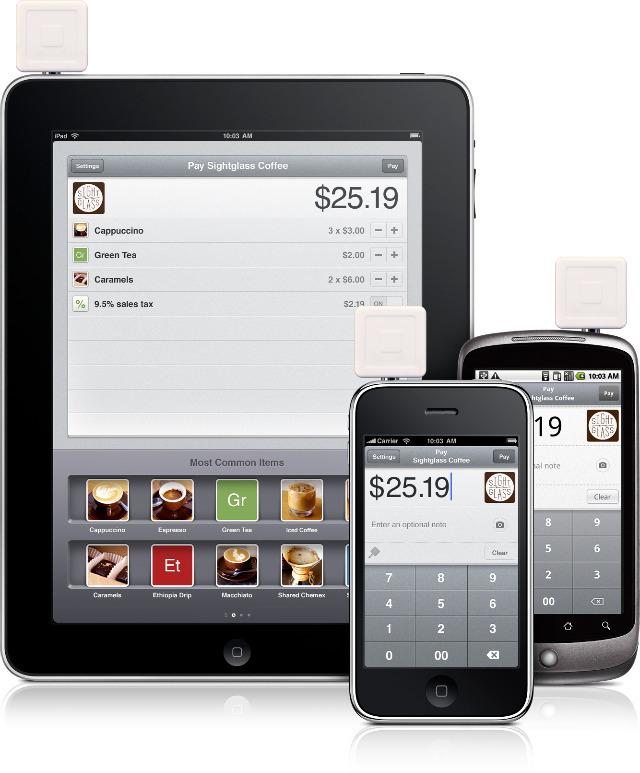
Design digitally becomes more humanized. Years of two dimensional experiences with limited colors, limited fonts, and limited bandwidth and accessibility are now all things of the past. The amazing experiences agencies globally are producing for their clients are truly phenomenal.


Social networking and search engine optimization will be forever linked and integrated for progressive marketing strategies. Good marketers know that the two work hand in hand and the linkage is growing more powerful daily. This graphic summarizes the Social SEO cycles in today’s hyper-connected environment.
As innovation in search and social continues, these platforms and ecosystems will continue to find valuable integration pathways between one another. As brands fight for relevancy and stay on the edge of what’s hot, the two systems truly need one another. I believe these brand categories will blur into a consolidated category. Will this just be “media” or will this be truly “digital media.” User experience consultants can help their clients by creating digital media strategies to embrace these changing times.
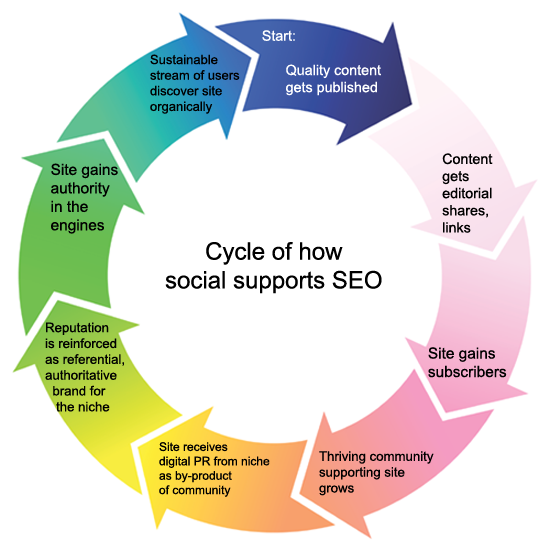
Here are 10 reasons to rethink your social strategy with a complete SEO integrated layer:
1. Search engines are smarter than ever before. You must embrace their new inteligence. The value of truly earned organic, editorial links will only continue to increase in value.
2. Earned links are the modern media hit factories of yesterday. A strong social strategy will earn a growing amount of editorially-earned links daily.
3. Being fresh with your editorial pace and content will enable you to get more link baits for authoritative domain fish out in the sea.
4. Frequent Updates = frequent visits by spiders, humans and everything in between.
5. Social web success brings increasing returns. Likes and other rating systems influence search algorithyms.
6. Social is sustainable. An honest, well-nurtured community strategy will naturally progress, keep you focused, and build domain authority.
7. Links aren’t good enough. You need strong PR digitally and offline. Strong endorsements contextually to your brand will help your digital reputation strategy.
8. Ride the wave. With 600 million people spending 30 minutes a day on Facebook, your focus should be there.
9. Social scavengers produce links more likely than any other first-time brand user.
10. Stay compelling and of high quality when producing content.

Marketers typically don’t try to court developers, but that will change in 2011. More and more brands are relying on user generated experiences and content. Deploying a deep set of content feeds proprietary to your brand, APIs to extend your applications and allow your brand ambassadors to create new ones, and being a technological open brand are all compelling reasons to build brand loyalty, brand recall and brand innovation. Developers drive innovation across all key platforms. Smart marketers will continue to work with their communities of designers and developers to scale their digital vision.
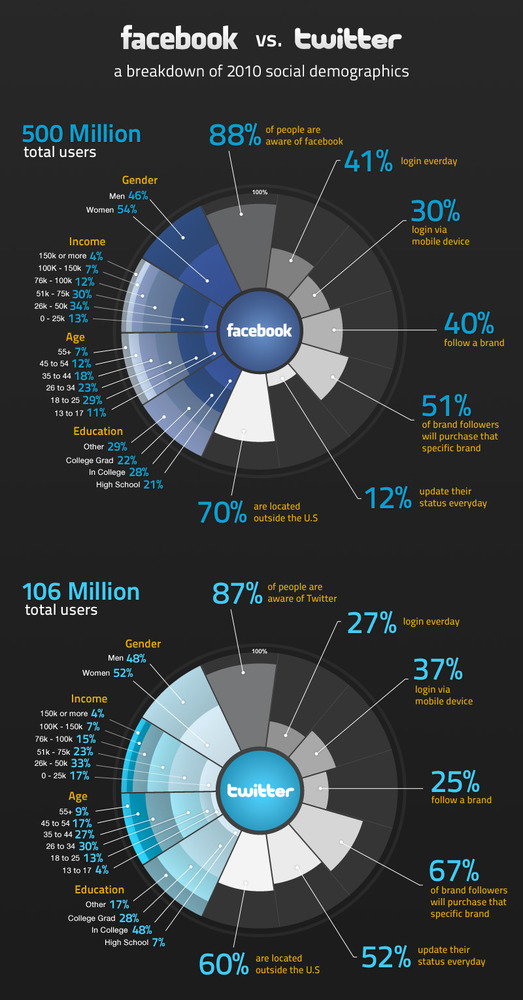
Marketers should make brand ambassadors and promote their creations to drive audiences to embrace them.
The two forms of applications brand ambassadors with development skills are continually embracing are mobile and Facebook applications. The reasons are clear:
Facebook is over 500 million people, and mobile smartphones are used by over 600 million people – Real people: connecting, sharing, and exploring
People continue to be the message more and more. Todays consumer has an auto filter for paid advertising. Leveraging the crowd to create a compelling branded experience is critical to an effective campaign.
Brand missions are to give people the power to create and share their content as the world becomes more connected and technology becomes more accessible.
Looking to the developer community enables brands to create deeper relationships with stronger insights.
So next time you have a brand marketing strategy discussion and you review your various targeted personas – make sure you consider the developer community. They will surprise you with what they do positively for your brand.

There has never been a more exciting time in the world of digital media and interactive marketing. To that end, I am going to develop a series of blog posts on the 10 most important emerging digital marketing trends. As I re-invigorate my blogging efforts I would love to hear from you. What do you agree with? What am I missing? How is your organization or agency pushing the envelope?
Trend #1 – Data Visualization Goes Mainstream
As more data becomes a common part of our lives, brands are using data visualization to make information easier to understand to draw powerful conclusions. Data plays a critical role in the decisions brands make everyday. Understanding complex data through engaging interactive graphical presentations offers audiences the opportunity to interpret that data, make business decisions on that data and share the experience. Additionally, it offers the opportunity for brands to fight content from growing stale and increases the shelf life and storyline of data as it grows and evolves.
(Client Example: A Data Visualization for Intel’s Federal division, entitled – DC Represents Security Tweets)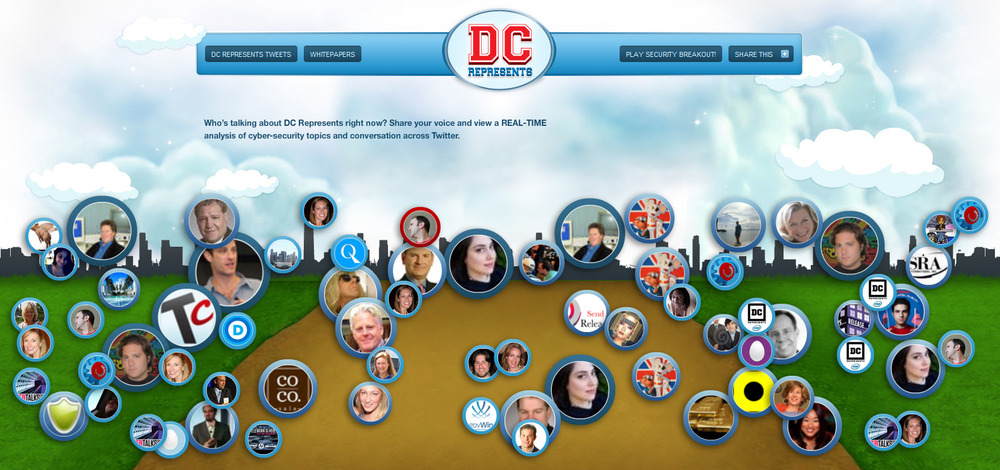
Defined by David McCandless as simply the act of making ephemeral data, ideas, or conceptual notions into an image in which anyone can see a more revealing pattern or a shape, using graphic design or sometimes using computational techniques.
I find these artistic renderings to be cool – it’s exciting to see them hit the mainstream in pop culture.
Below you will find what I have found online as some of the most engaging data visualizations.
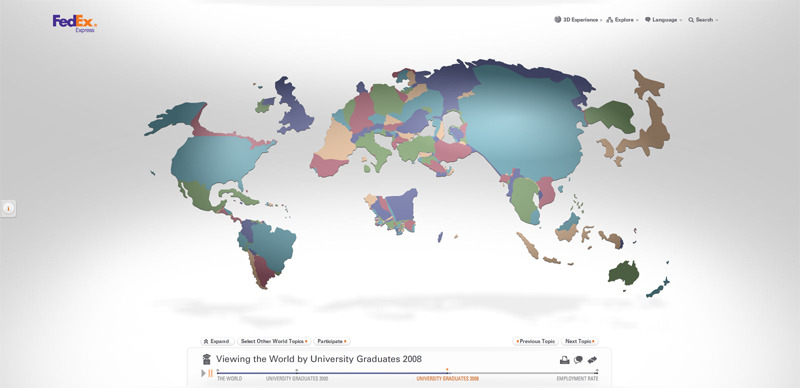
Fedex – http://experience.fedex.com

http://www.informationarchitects.jp/en/wtm4